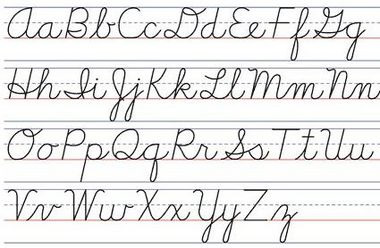What learning cursive really taught me

Since the US Department of Education dropped cursive writing from the standard national curricula in 2011, the debate on the value of learning penmanship has raged.
Some argue that the skill is obsolete, akin to learning how to use an abacus in the age of supercomputers. “[The] time kids spend learning to write curvy, connected words, is time kids could be spending learning the basics of programming and any number of other technology skills they’ll need in our increasingly connected world,” wrote blogger and podcast host Justin Pot in a spirited editorial rejecting the utility of such “anachronistic skill.”
But for me, holding a Bic ballpoint pen—that anachronistic tool—always takes me back to third grade penmanship class. Then, the cheap disposable pen was a trophy of achievement, and the day I upgraded from pencil to pen is as memorable as any graduation day.
I attended an all-girls private school in the Philippines run by Belgian missionary sisters of the Immaculate Heart of Mary, a school that was both ultra-traditional and very progressive, if not outright socialist. There were days when classes were cancelled so we could march on the streets in solidarity with disenfranchised farmers for agrarian reform. (I practiced lettering on political signs and could make a sturdy papier-mâché protest effigy at a young age.)
But there were also many days spent learning how to sew, touch-type, and yes, master the art of cursive writing—truly one of the greatest sources of angst for a third grader.
Our bible was the Peterson Directed Handwriting Manual. Peterson is a particular type of cursive style where the letter P had an antenna; the capital Q looked like a fancy number two; and the Z had a funny loop that dipped below the baseline. We started learning at the end of second grade, when we were all issued manuals to trace and practice on as homework during the summer break.
For what must have been hundreds and hundreds of hours, we toiled and persevered—training our young hands to commit those letterforms to muscle memory. Rhythm, form, slant, space. Rhythm, form, slant, space, I would sometimes silently chant to coax my wild clumsy hand. These were the things I obsessed with at 7 years old.
Perfect penmanship was expected in all our classes. Our notebooks were even collected at the end of every semester and graded based on fidelity to this style and the neatness of our note-taking. We had to do this in proper sitting posture too. It was about conformity, discipline and deportment. It was religion. It was penitence. It was torture.
We knew that we were doomed to writing with a pencil until we got it right and nobody wanted to languish in that graphite purgatory.
I was second in a class of 40 to graduate to a pen. I remember that it was our language teacher who announced it, somewhat out of the blue—interrupting class for an impromptu ceremony in my honor. She proclaimed, “Anne can now use the pen,” beaming while my classmates applauded. It was epic. This was the day. I felt different—instantly taller, smarter, perhaps.
I recall ceremoniously demoting my yellow #2 pencils to the second What learning cursive really taught me - Quartz:
